November 23, 2024, the weather is sunny, and it’s that time of year again to enjoy the maple leaves in Tokyo, and this year I went to Ontake Stream Valley in Aomame City, a suburb of Tokyo, to enjoy the maple leaves.
besides the subject matter
In fact, this year, I originally planned to go to Hinamizawa to see the maple leaves, but it turned out that when it came to November during the maple season, either I had something to do on the weekend or it was windy and rainy over there in Hinamizawa, which led to the failure of my final plan. It’s like there’s a mysterious force stopping my plan ?.
wiring diagram
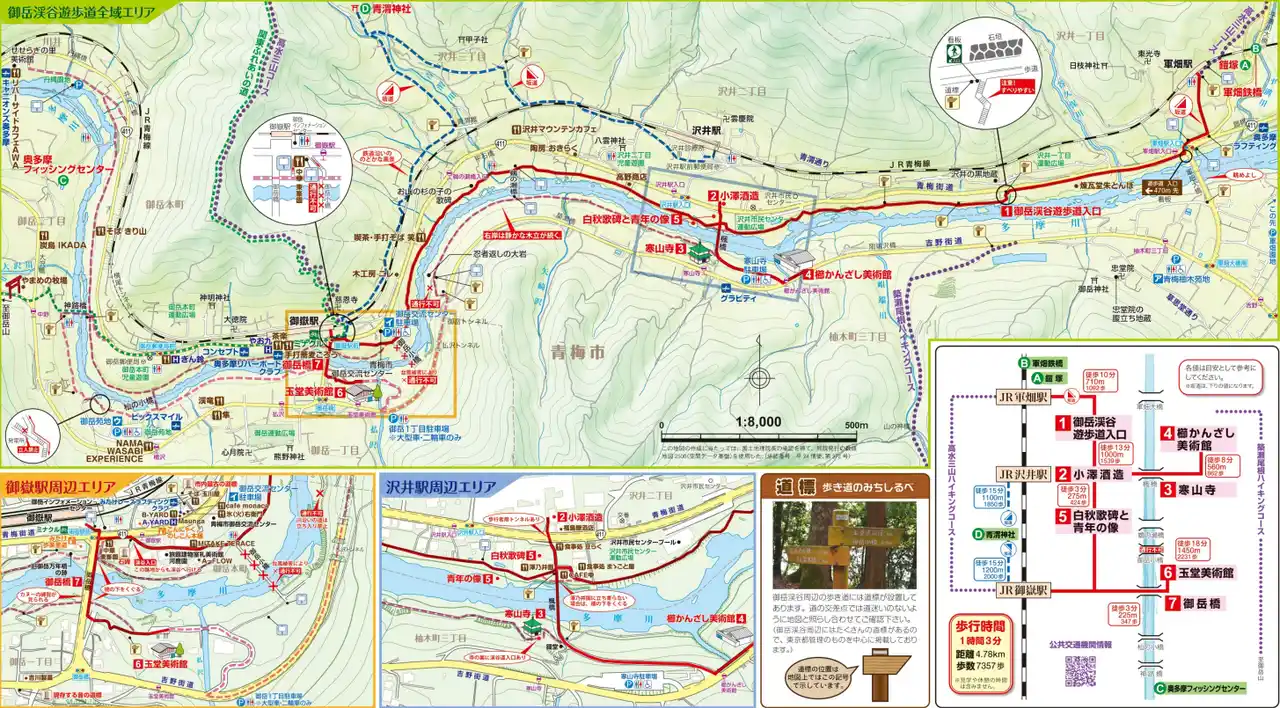
This tour basically follows the official route, starting from [Junkahata] and ending at [Ontake], and enjoying the maple leaves along the Tama River via the Ontake Gorge walking trail.
About Trams
To get to the Ontake Stream Valley Trail from Tokyo’s 23 wards, you need to take the JR Chuo Line Aomame Express Aomame Line from Shinjuku to Aomame, and then the JR Aomame Line Otama Line to Junkahata.
Please note that both Junkahata Station and the return trip to Mikatake Station are unoccupied, so it is very troublesome if you do not have enough credit on your IC card, so please prepare enough credit in advance.
Of course, you don’t have to be nervous if you don’t have enough money left, so you can leave the station first and get a certificate if one is available at the station, or if not, you can just go in and out of the station and wait until you arrive at a manned station to explain the situation and then ask a staff member to settle the bill manually.
Also this line only runs twice an hour, so you’ll have to wait half an hour if you miss it, so you need to calculate your travel time.
travel notes on red leaves (esp. in Yuan dynasty)
Take a small train with only 4 cars to Junkabatake Station.
Not bad for a weekend of maple season, the whole thing was packed to the gills ?.
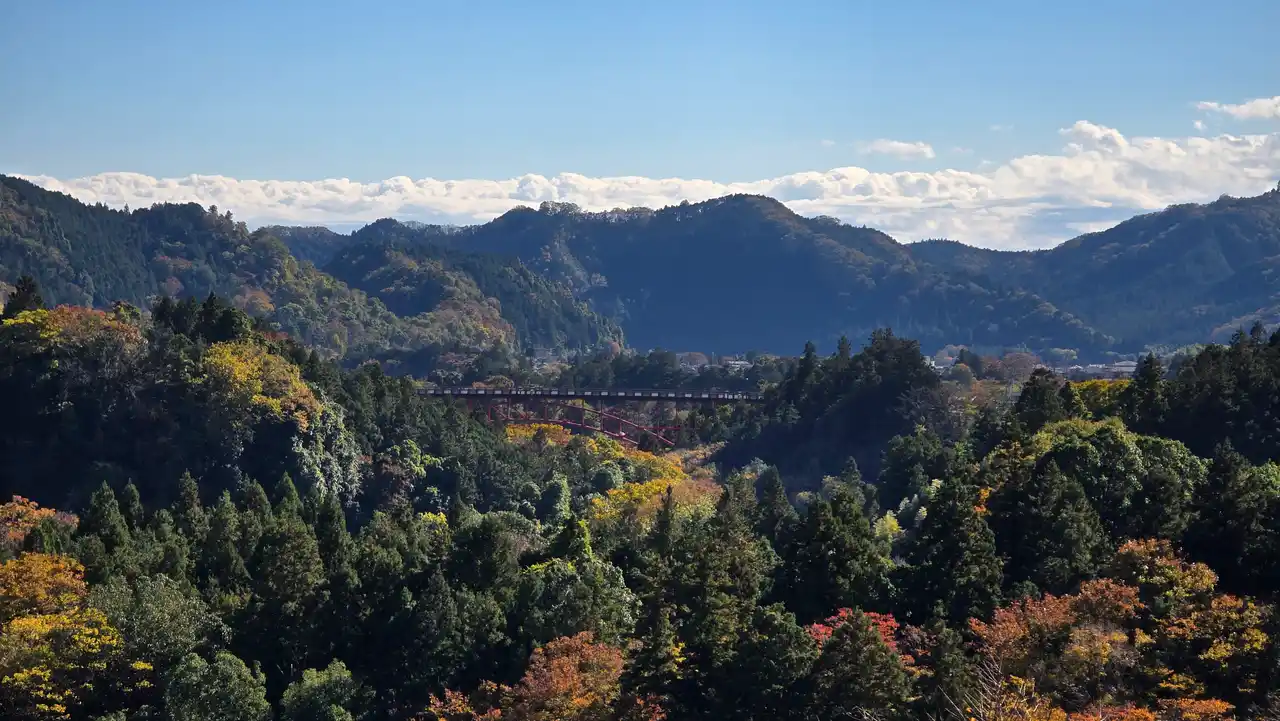
As soon as I got off the bus, I was captivated by the rich colors and layers of the landscape, it was really beautiful.
Walkway (upper part)
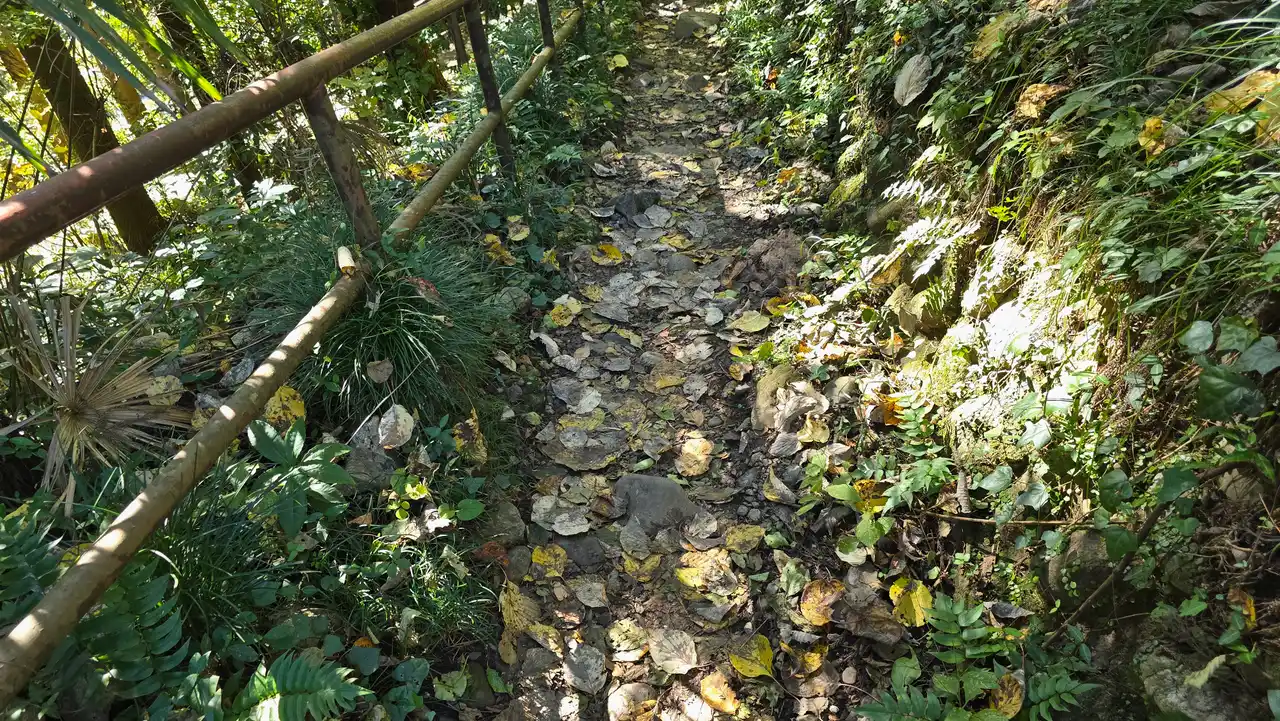
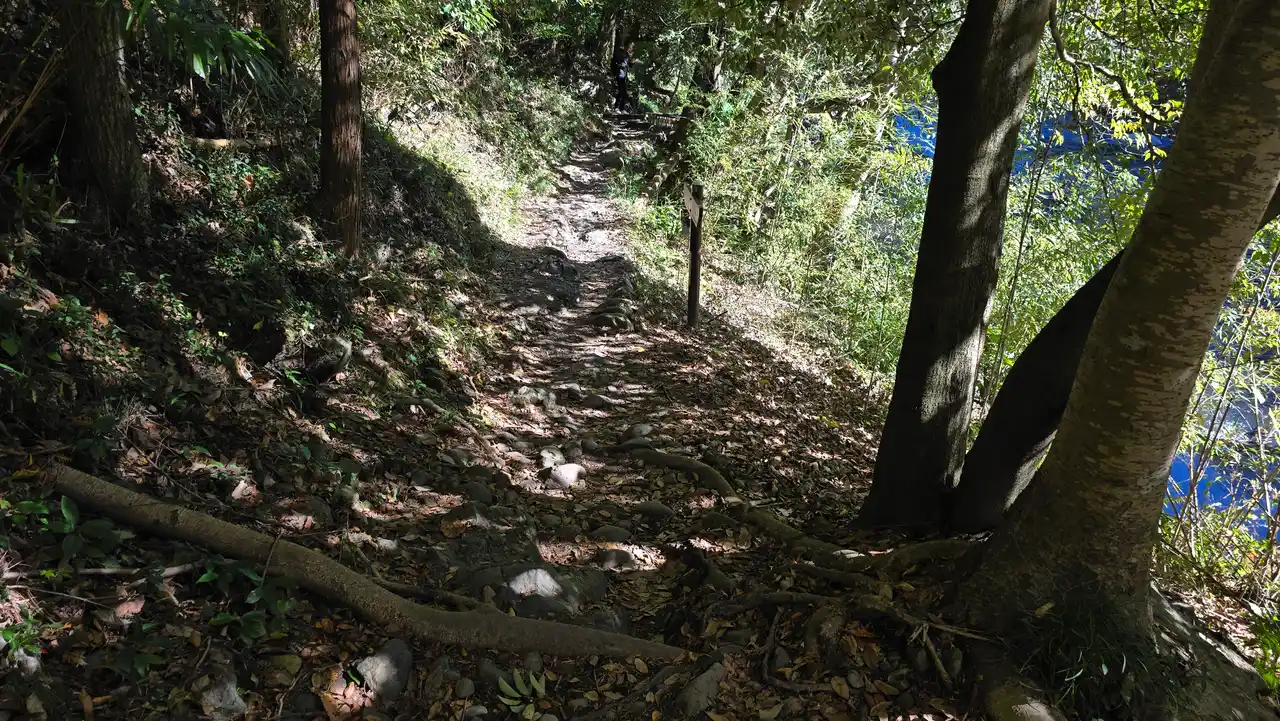
Walk about 500 meters to the walking trail, although it is said to be a walking trail, the road is still a bit wild and slippery at the beginning, so you need to pay attention to safety.
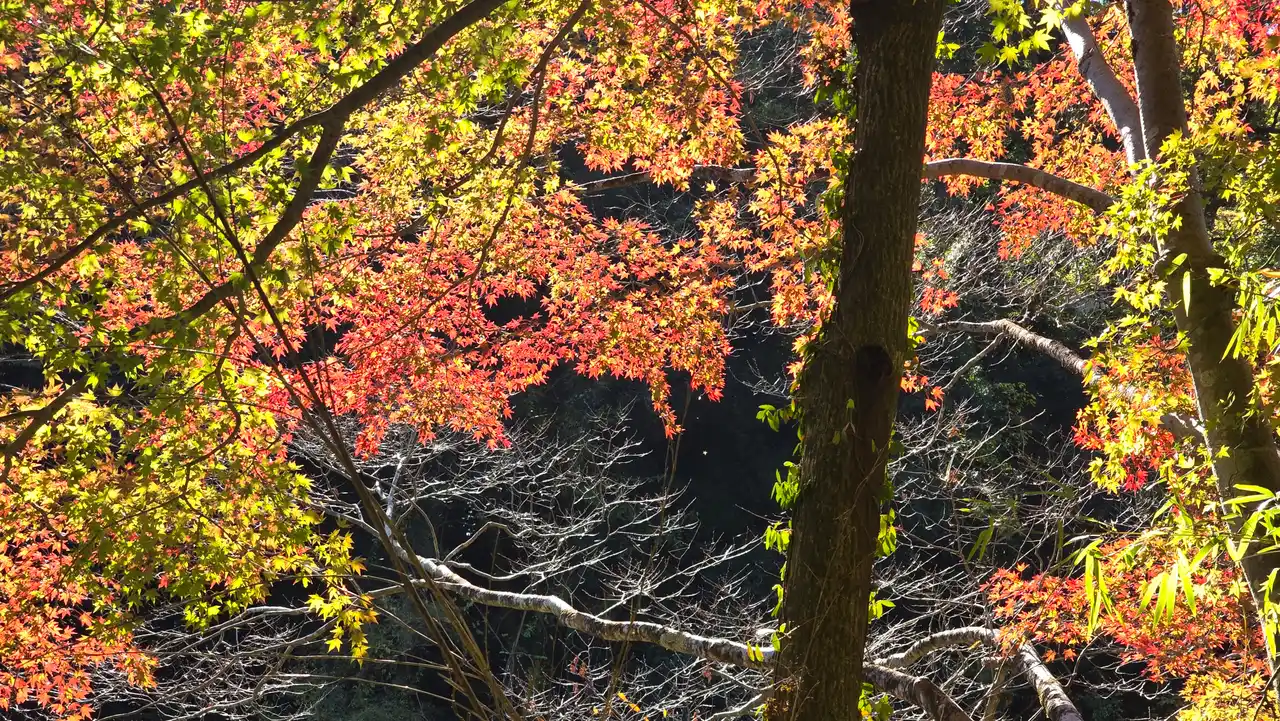
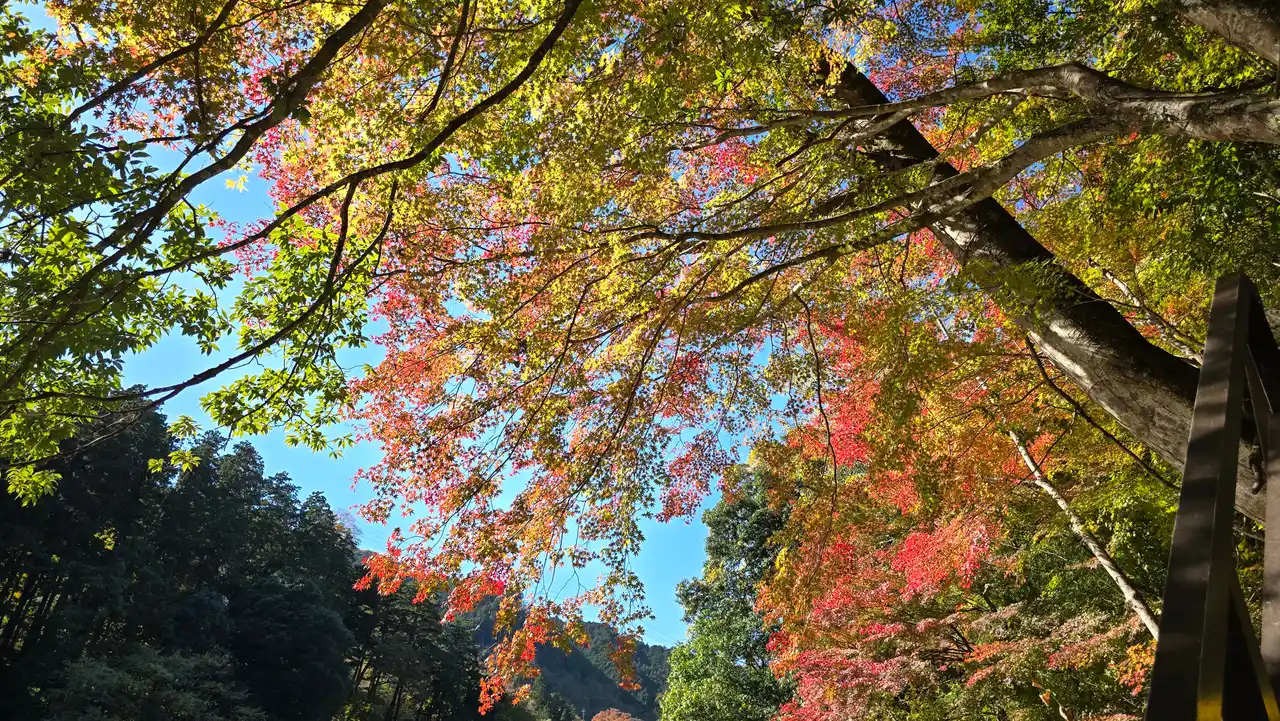
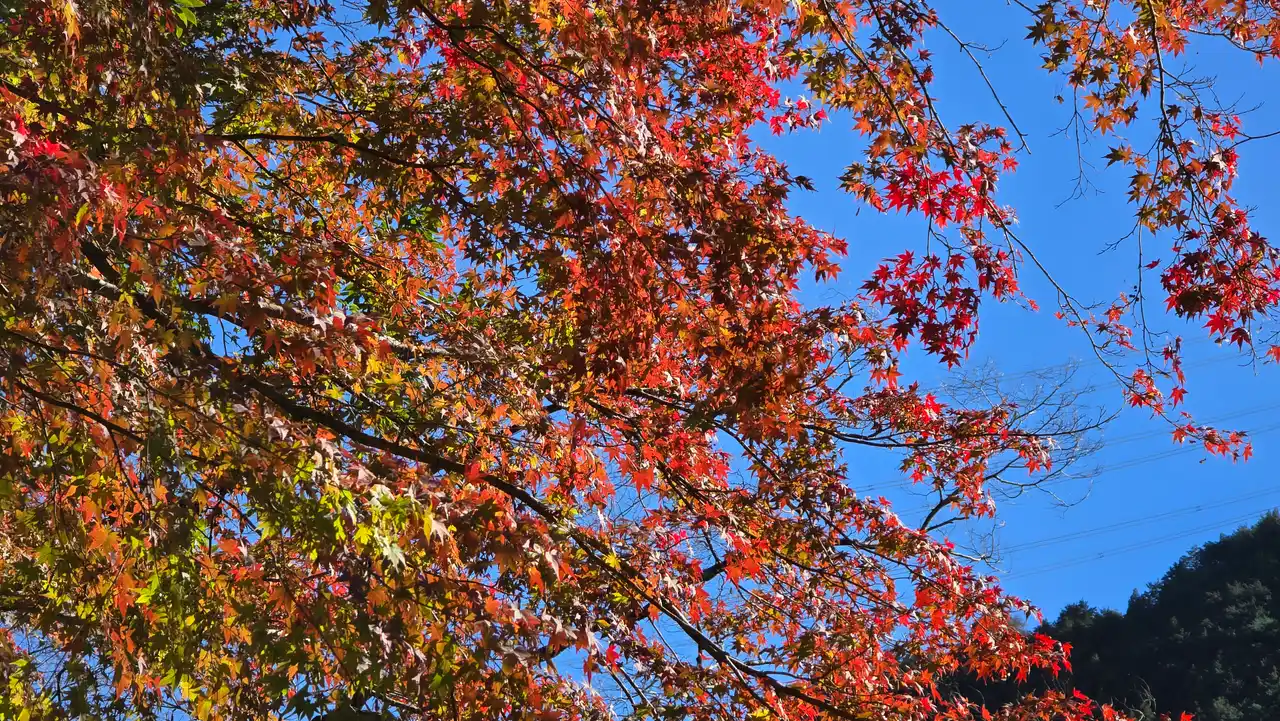
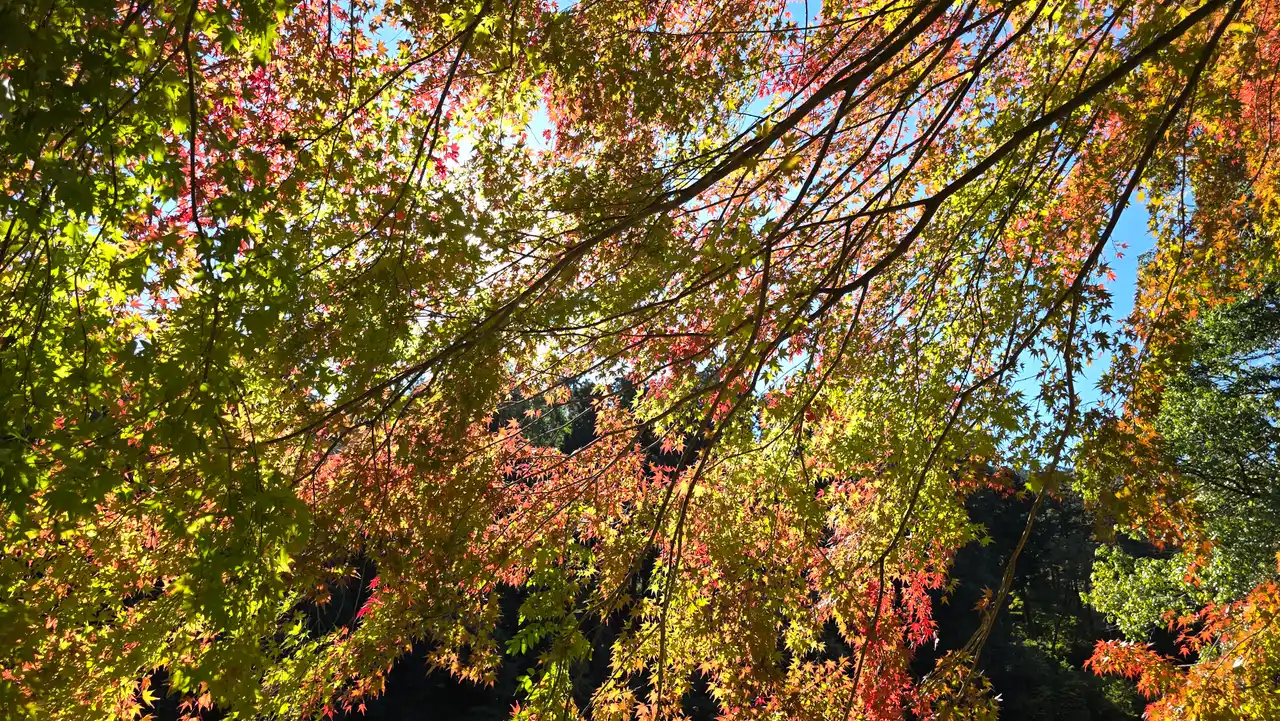
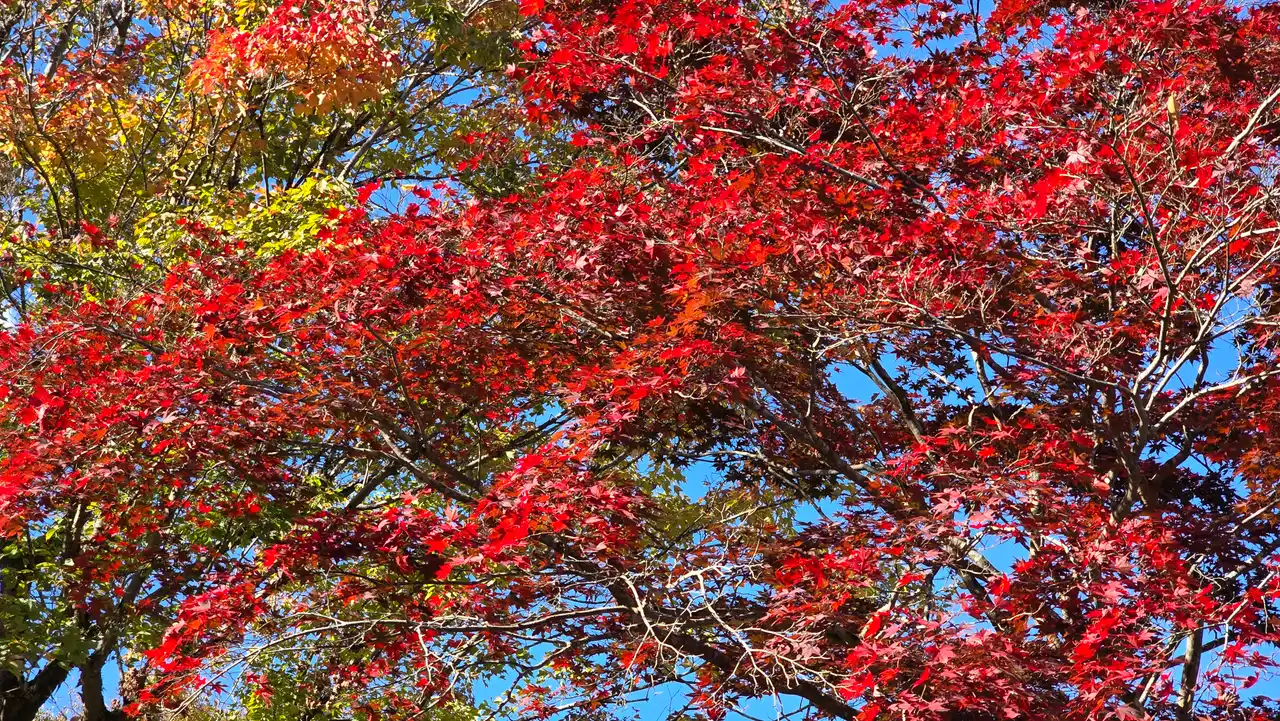
Most of the maple leaves on the trail were still in alternating red and green at first.
But there is also a unique beauty to maple leaves in this state.
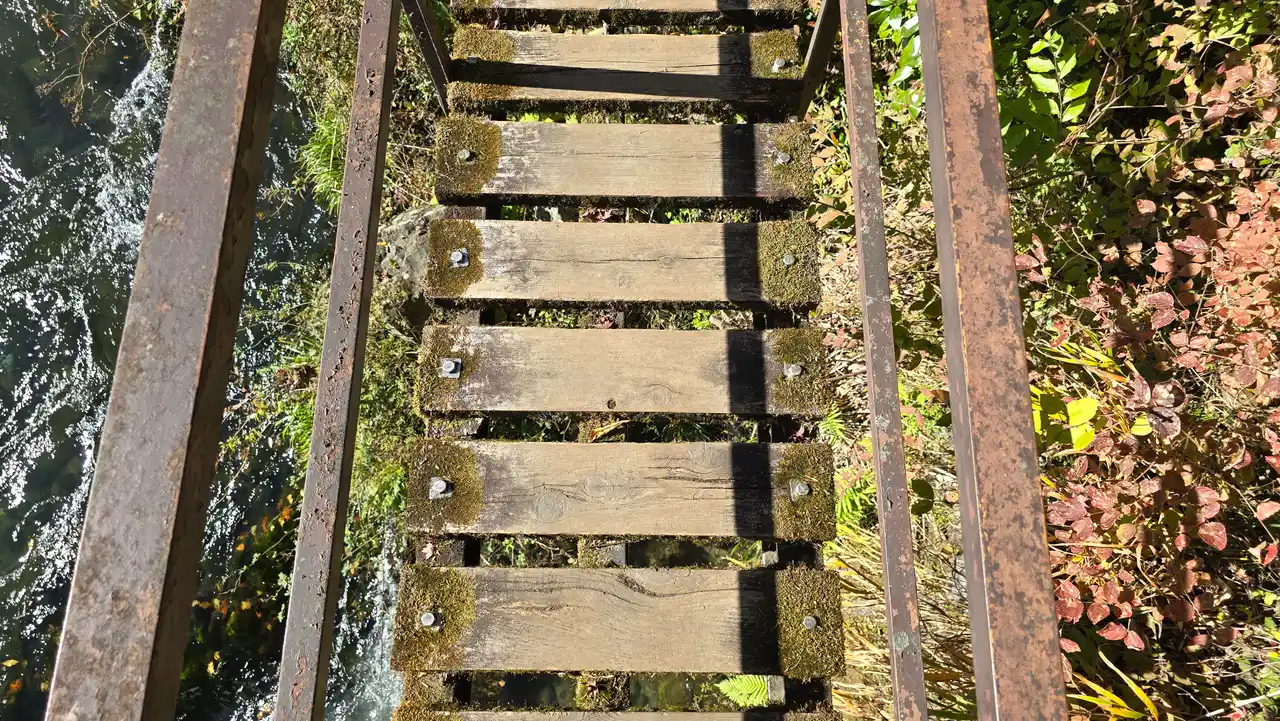
The small wooden bridge on the walkway has a pretty big gap, which is slightly scary to walk on ?.
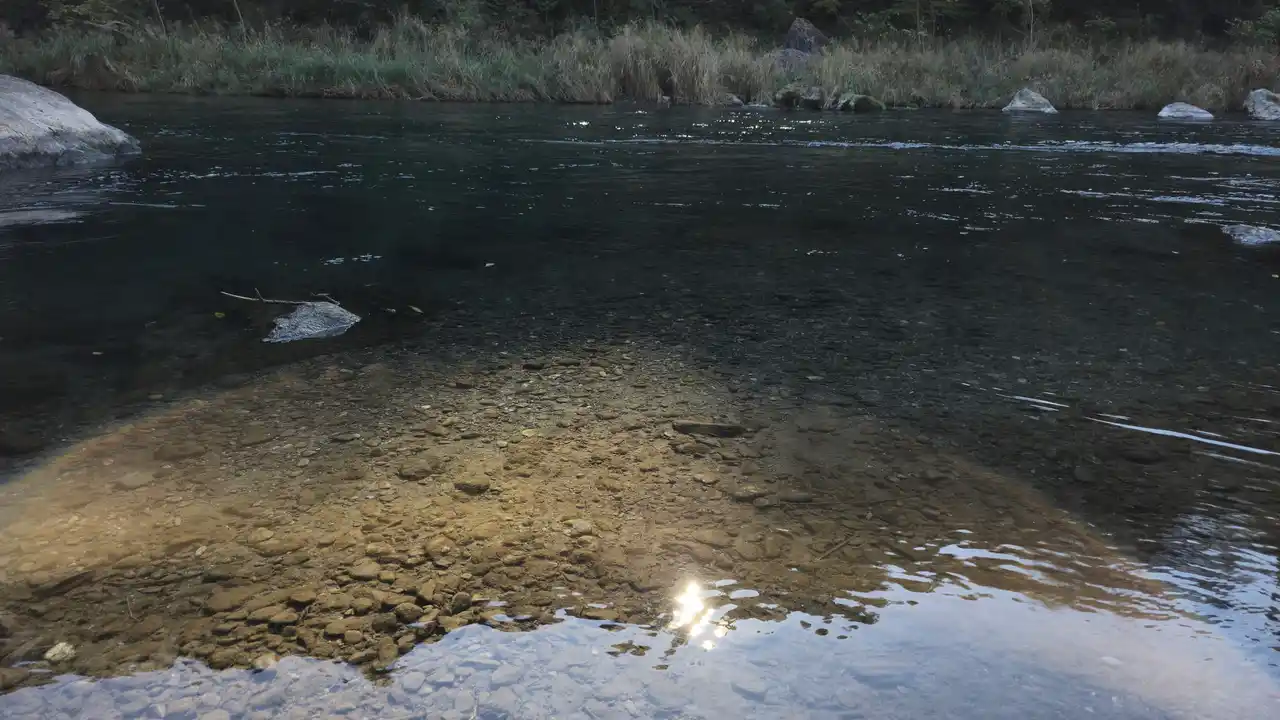
The water in the Tama River is also very clean.
Creek Valley with Maple Leaves
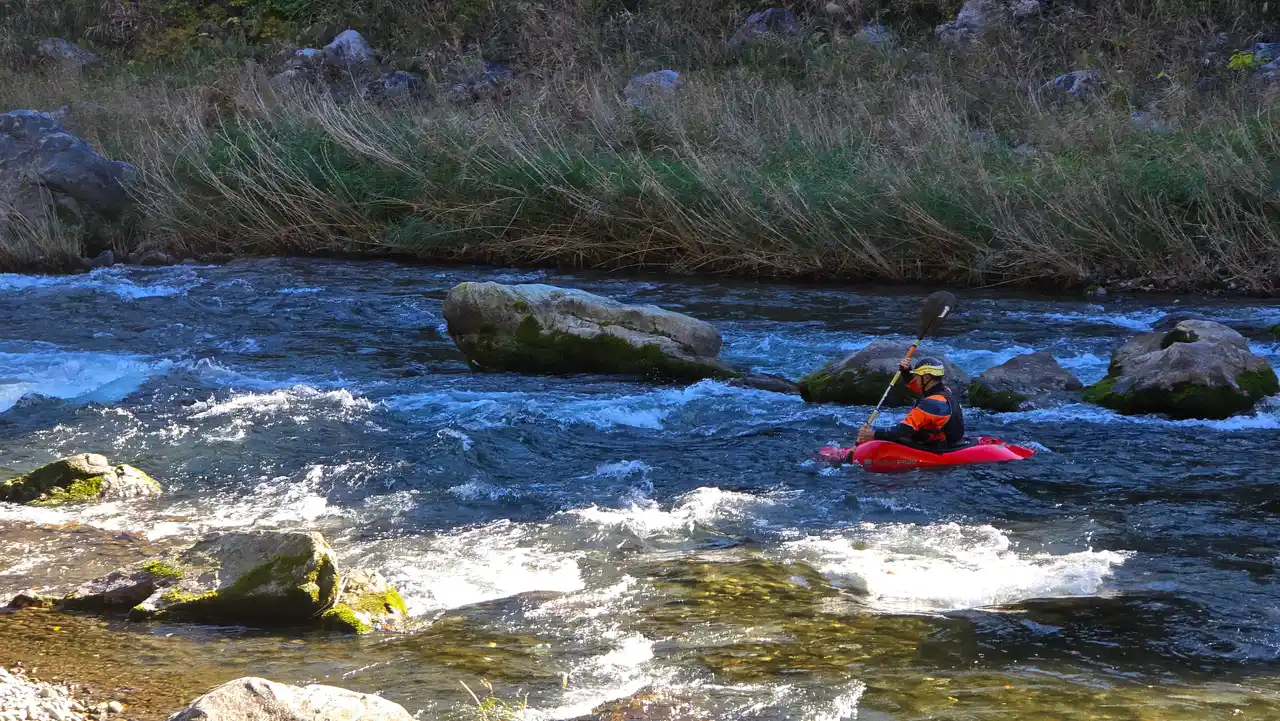
At this time there were big men boating on the creek valley.
Fengqiao and Cold Mountain Temple
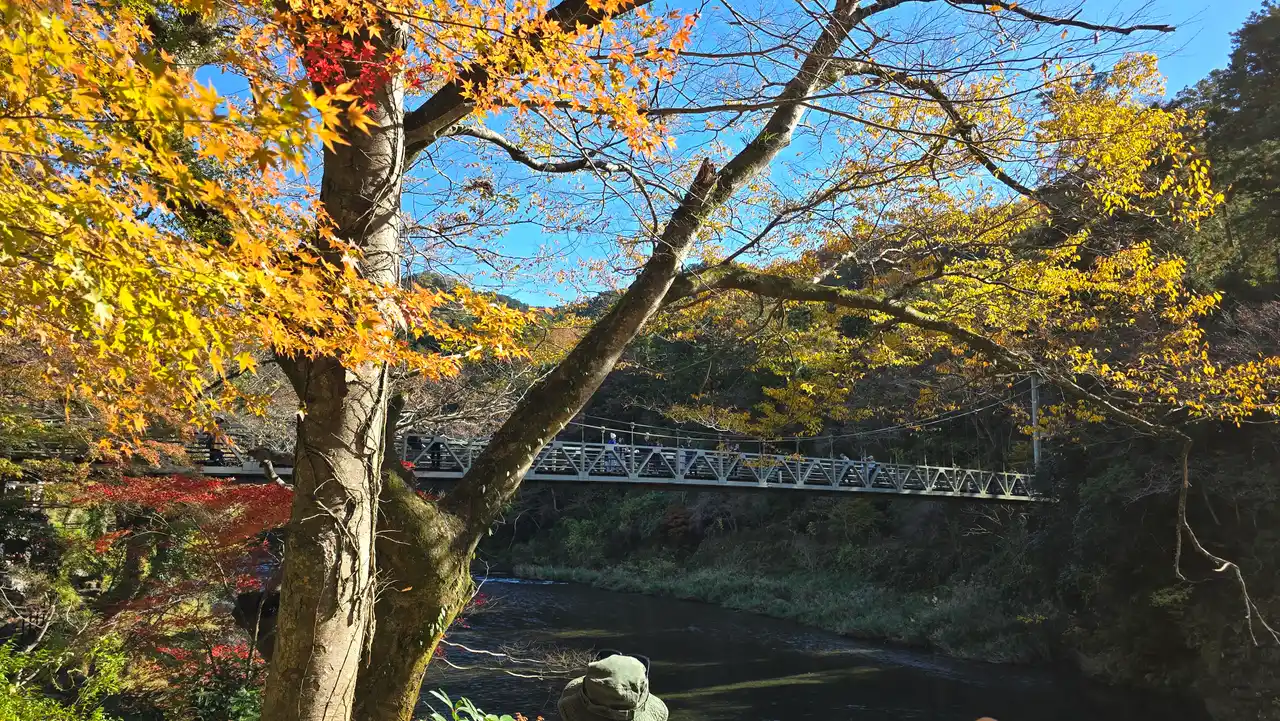
Along the middle of the route, it came to Maple Bridge.
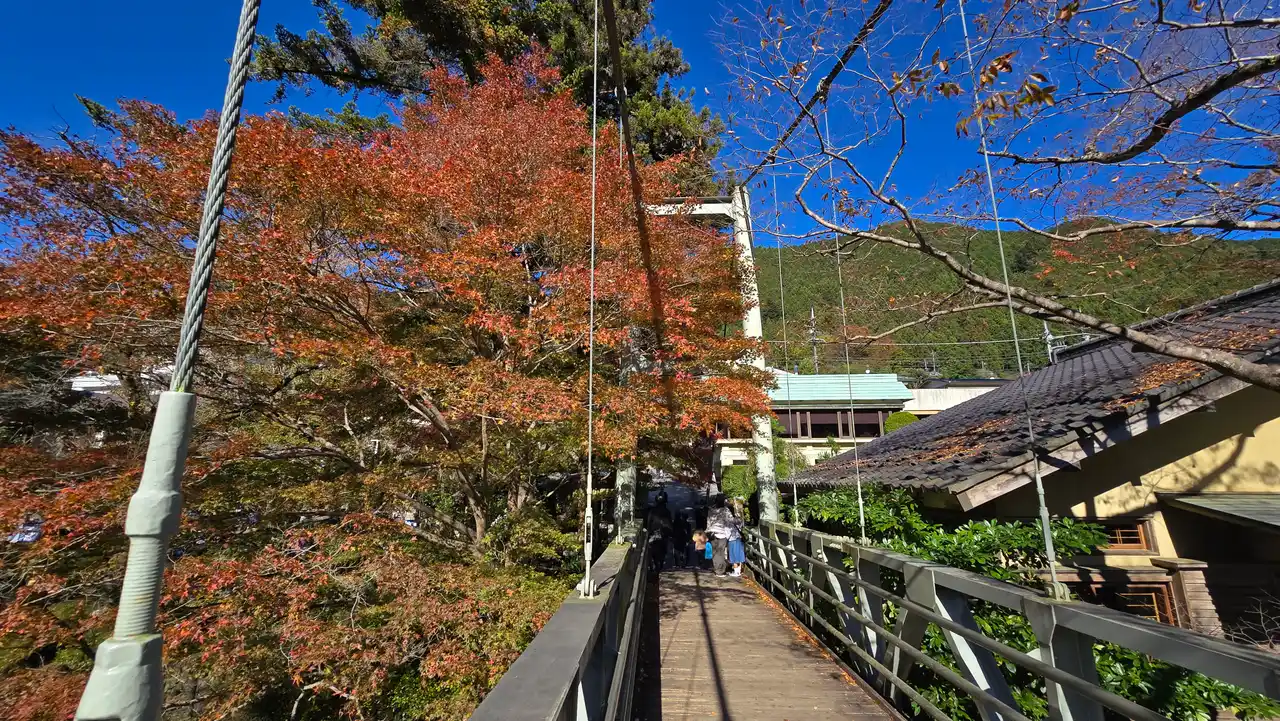
Looks like a rope bridge structure? It would be wobbly for people walking on it.

Looking down from the bridge. The view is especially good.
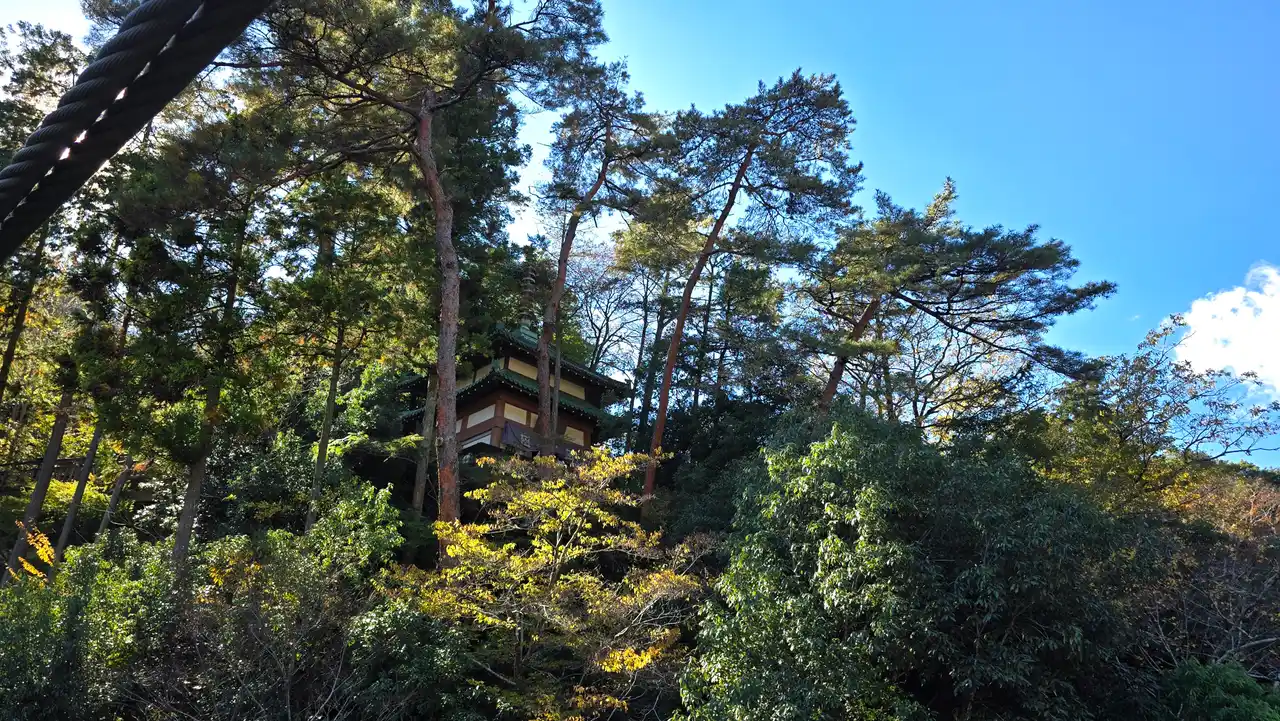
Looking upwards you will see Cold Mountain Temple.
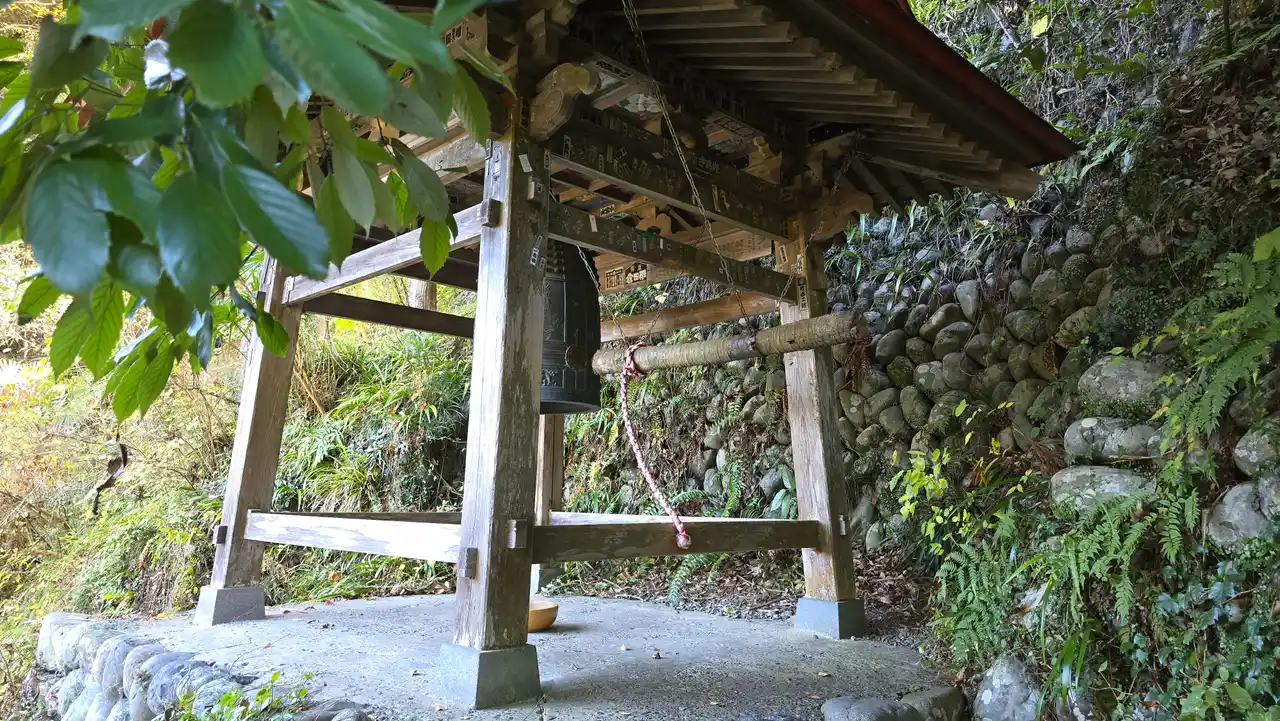
Going upwards you will see the ringing of the bell.
From time to time on the road, you will hear the ringing of bells, which originally originated from here.
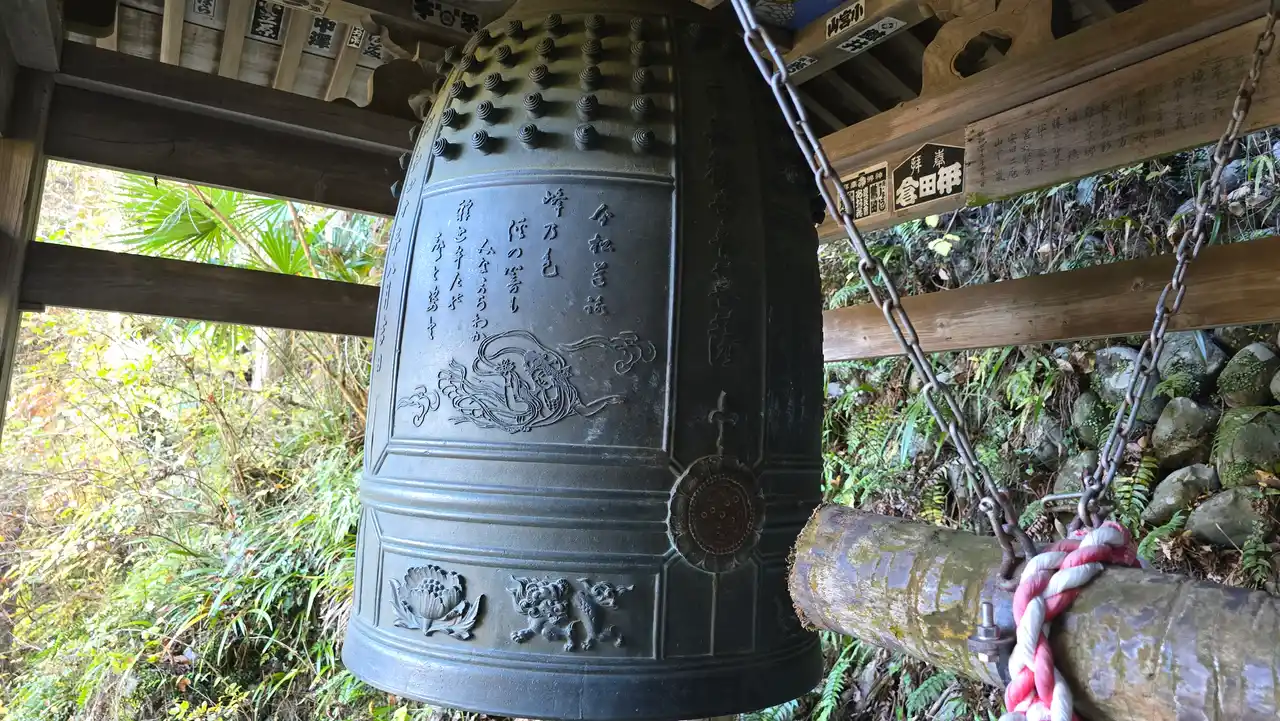
The pattern on the clock is very fine.
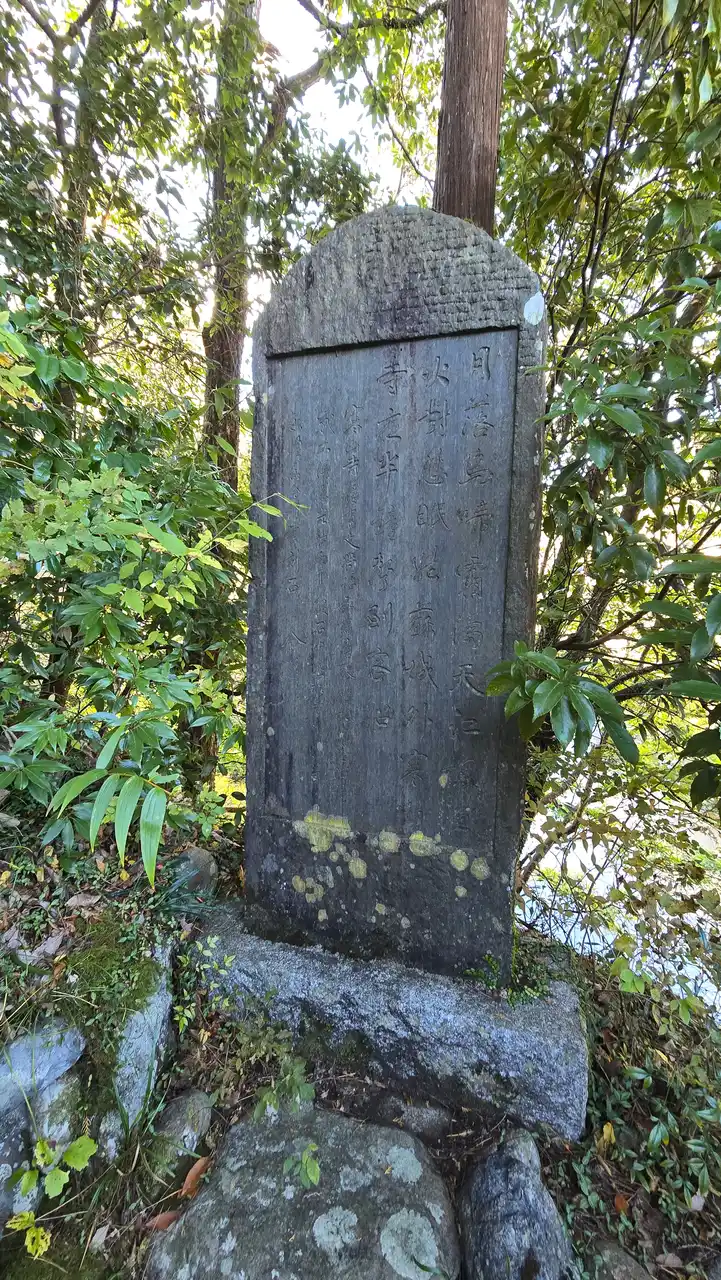
You’ll also see a stone tablet on the way, and although the words are a little hard to read, the contents are actually:
The moon is falling and the frost is breaking up the sky.
Jiangfeng fishing fire vs. melancholy sleep
Cold Mountain Temple outside Gusu City
The sound of bells in the middle of the night comes to the passenger ship
That’s right it’s the famous ancient poem – Maple Bridge Night Poetry.
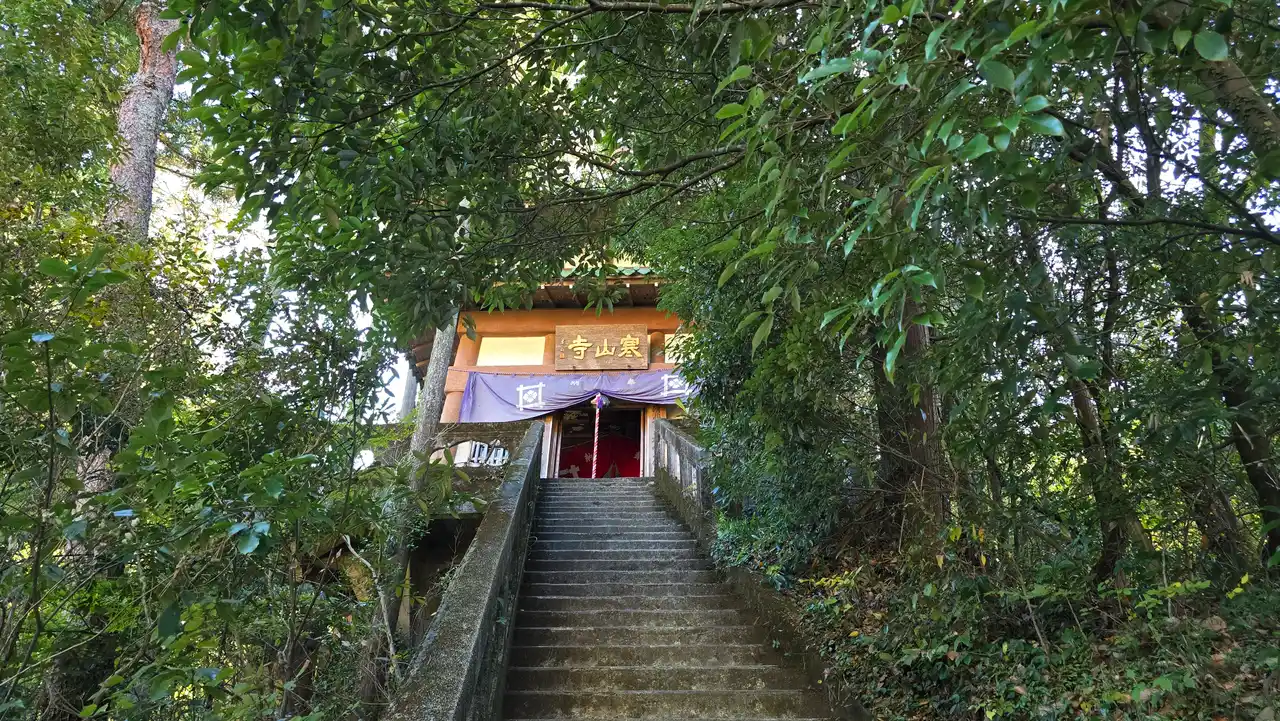
Further up the hill you will see the Cold Mountain Temple.
Here is an introduction to Cold Mountain Temple in Aomame City:
Hansan-ji Temple in Tokyo was opened in 1930, and in 1885, when the calligrapher Yonefuri Taguchi visited Hansan-ji Temple in Suzhou during a trip to China (Qing Dynasty), the monks of the temple entrusted him with a wooden statue of Shakyamuni. After returning to China, Yonefuri Taguchi searched for a suitable place to place the statue of Sakyamuni. In the end, the temple was built on land provided by Tahei Ozawa, the president of the Aomame Railroad (now JR Aomame Line) and the owner of Ozawa Brewery.
Cold Mountain Temple is famous for “Night Mooring on the Maple Bridge” written by Zhang Ji, a poet in the Tang Dynasty, and the bridge and bell are especially famous. On the way to Hanshan Temple from Sawai Station, you need to cross a bridge called “Fengqiao”. There is also a bell inside the temple. The bell of the first generation was requisitioned during the war, but the existing bell was recast in 1965 (Showa 40) and can be rung.
This temple is a “three-no” temple with no sect, no residence (the abbot is not present), and no religious legal personality. However, it is well maintained as it is actually integrated into Seiryu Garden Sawanaien, a facility affiliated with Sakuzo Ozawa. It is said that every few years, people from Cold Mountain Temple in China come to visit the temple.
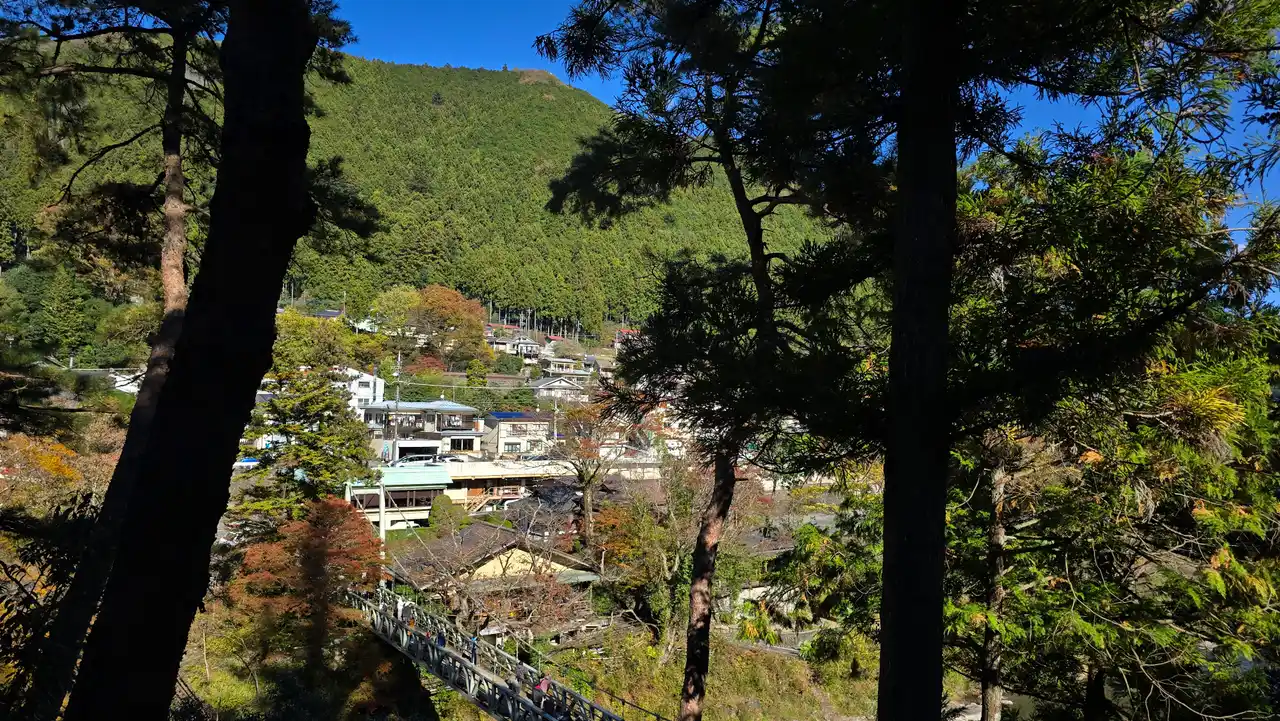
Viewing the Maple Bridge from the Cold Mountain Temple Observatory.
Walkway (center section)
After seeing Cold Mountain Temple, return to the trail and continue the journey.
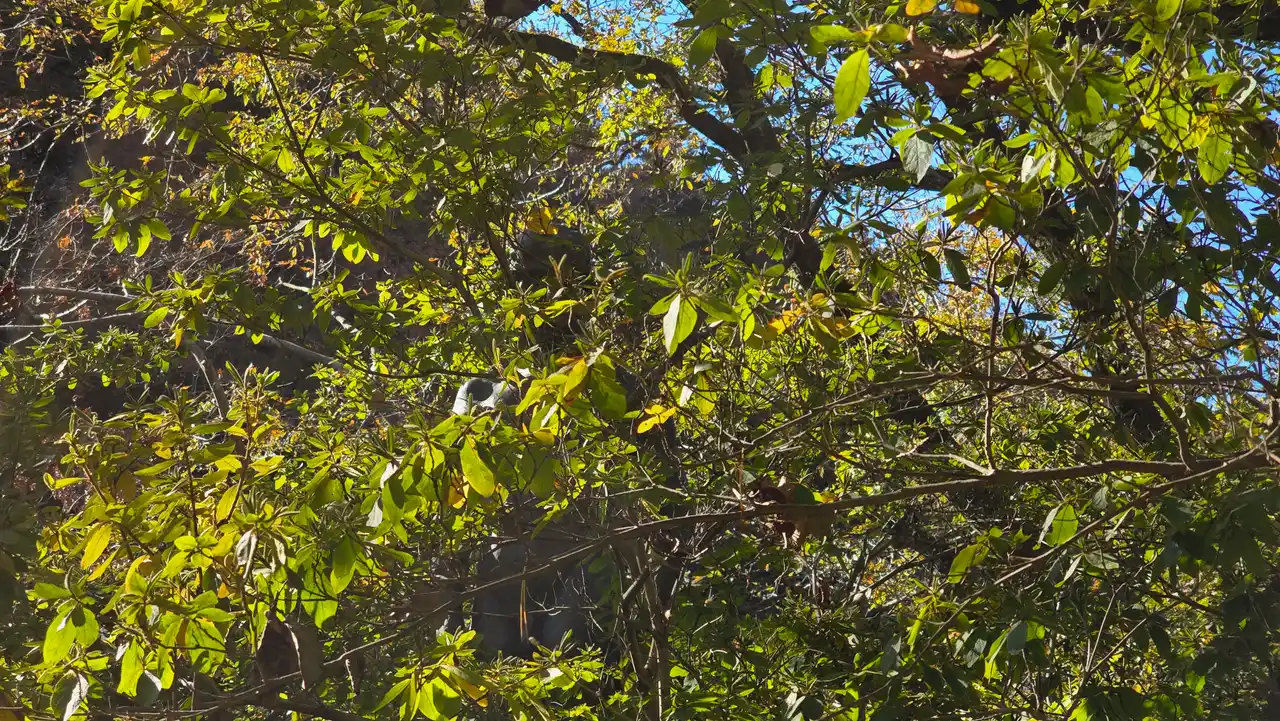
A bronze statue was found hidden deep in the dense vegetation.

The roads are getting wild again.
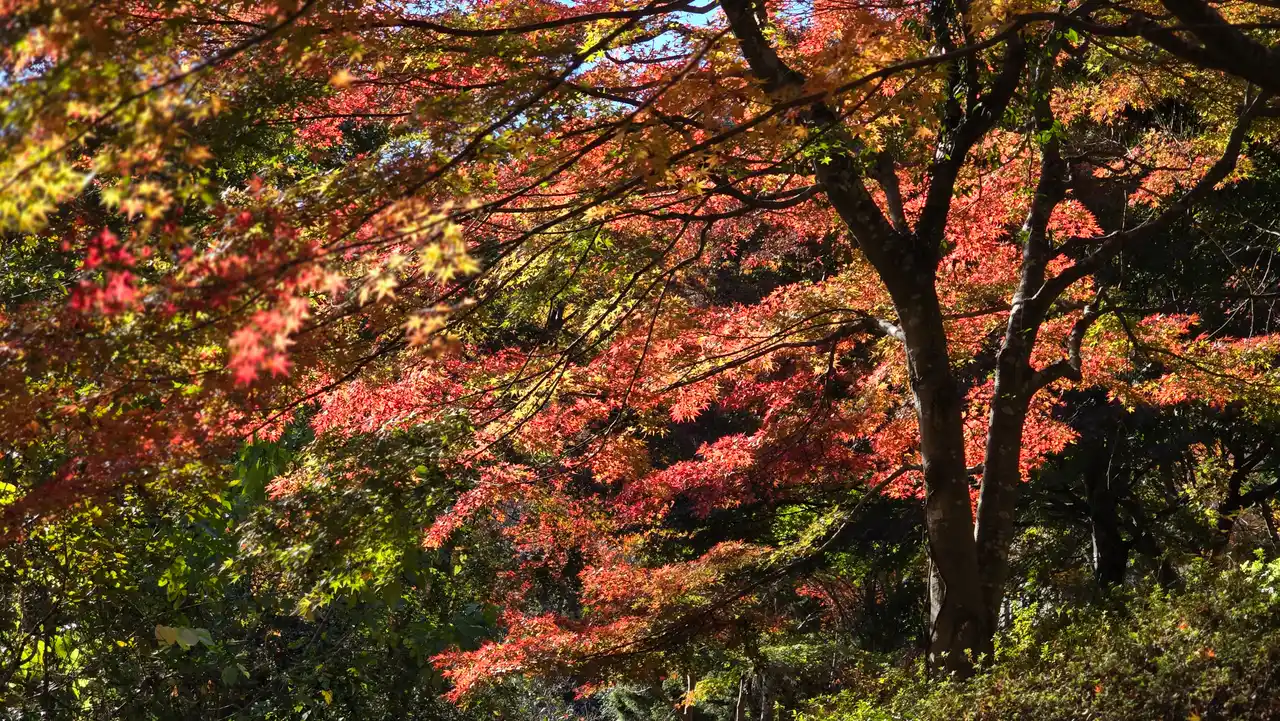
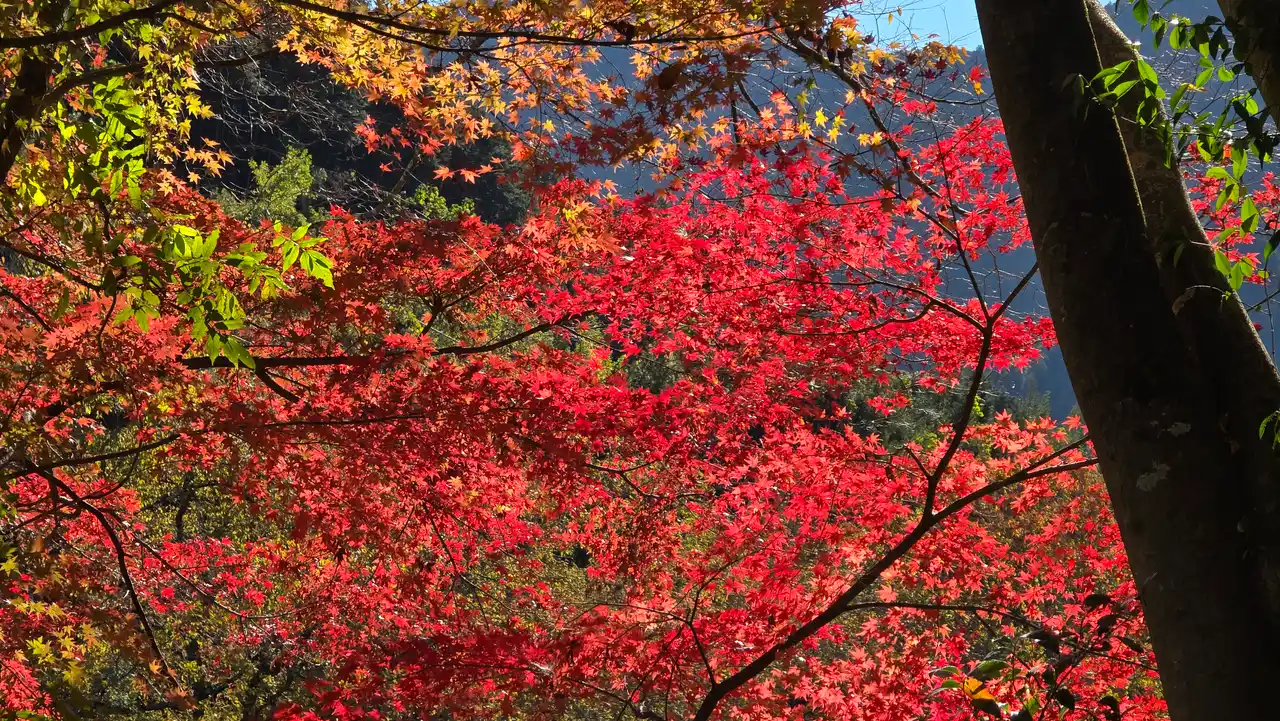
The maple leaves on the road are gradually getting redder and redder because they are gradually going west.
lunchtime
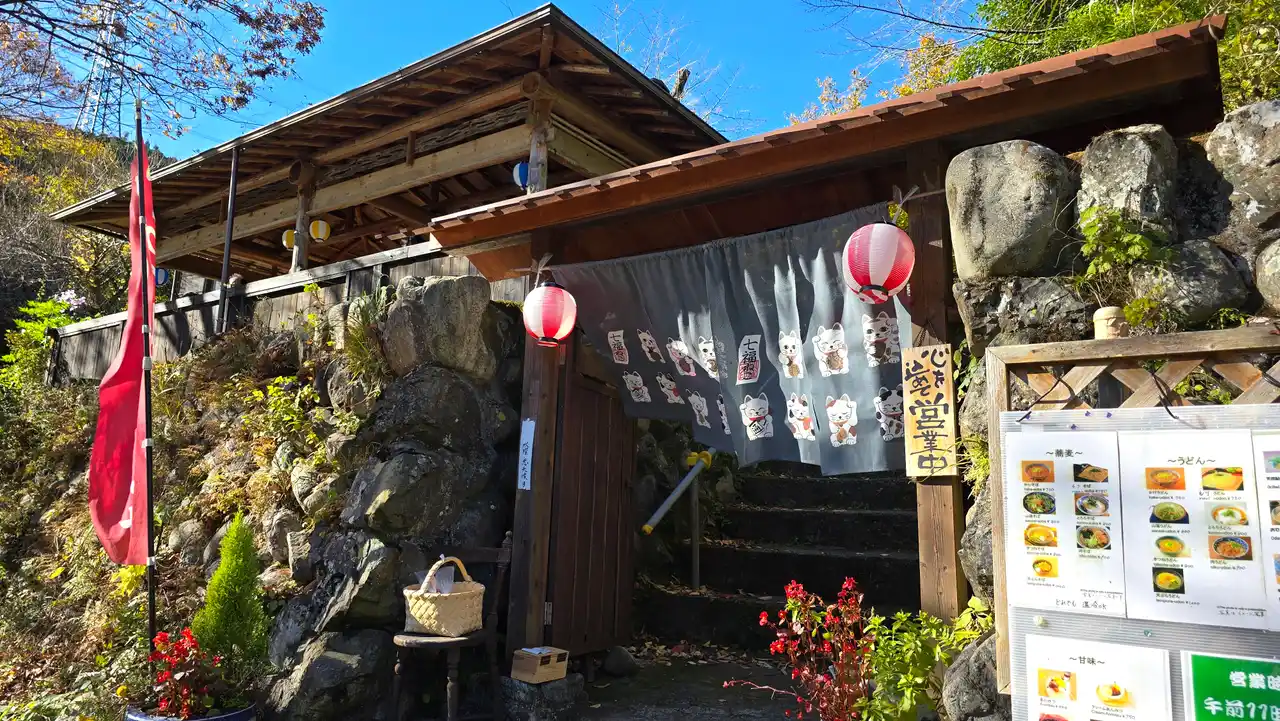
Afternoon meal is selected at the Tea House Gallery Tsuinkuru along the route.
The best thing about this restaurant is that you can eat while enjoying the view of the Tama River.
But unfortunately the seats by the Tamagawa River were full that day.
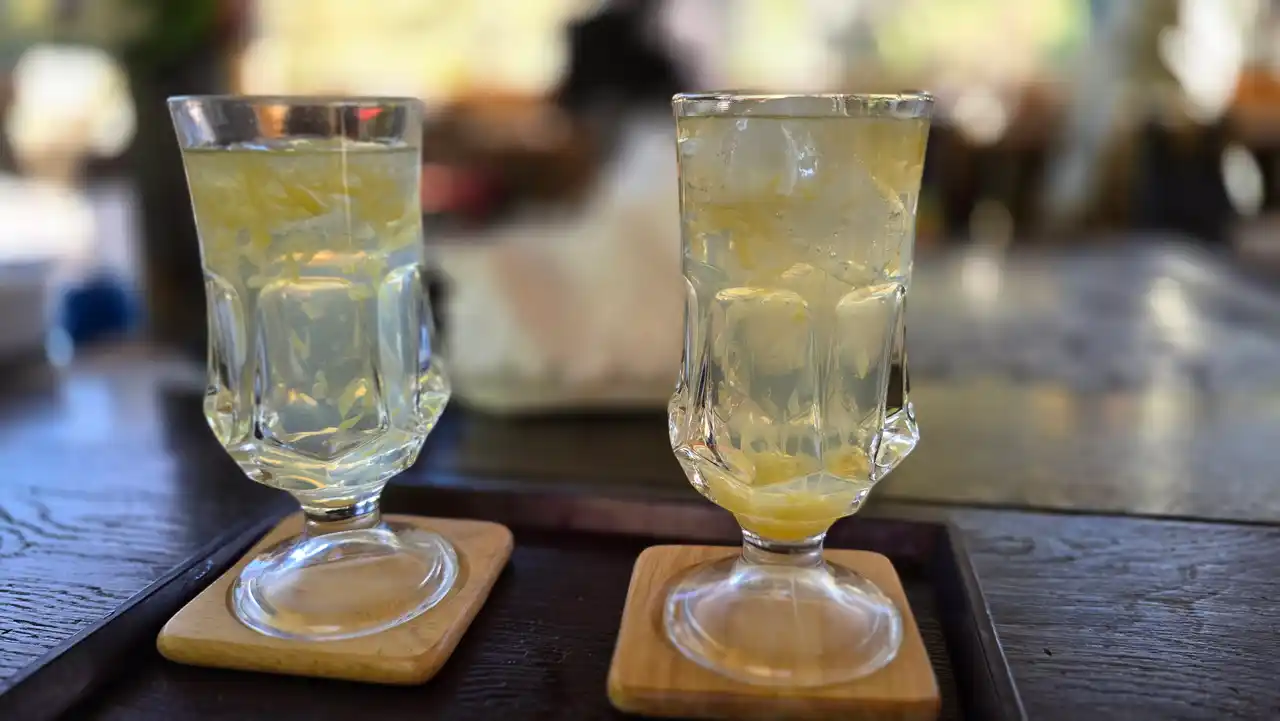
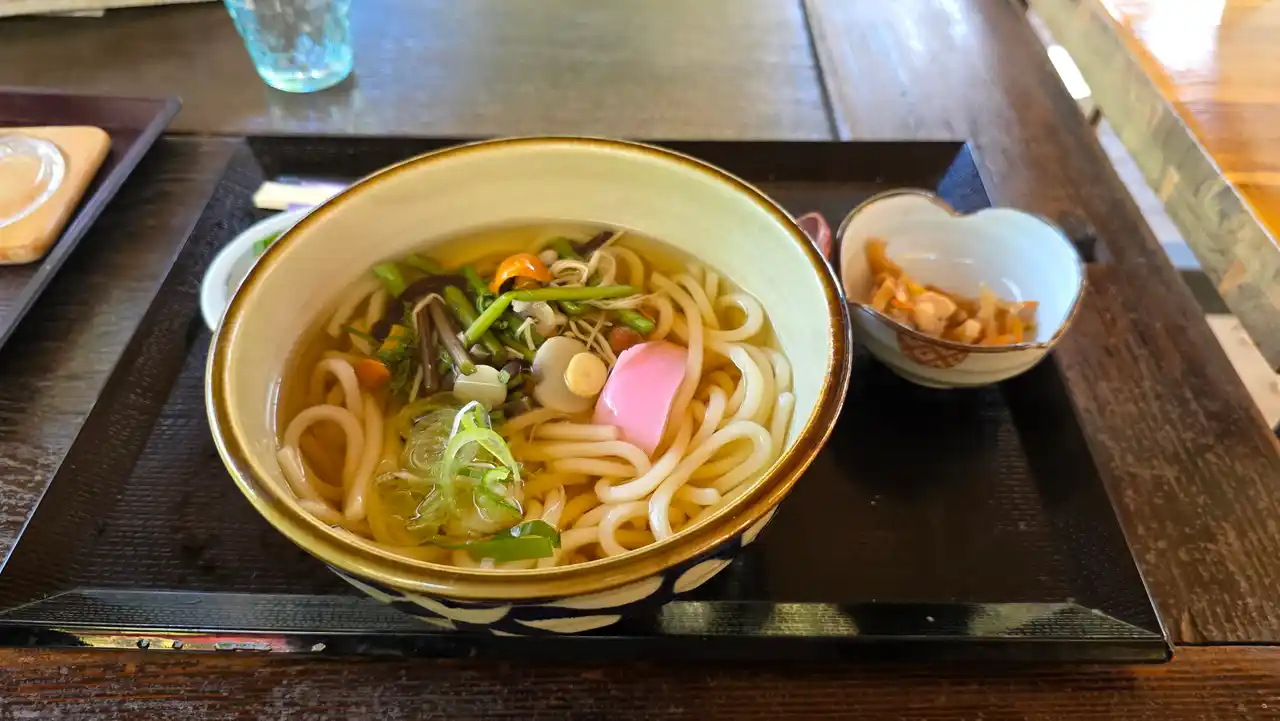
So for lunch, I ordered a yuzu juice and udon noodles with mountain vegetables.
Oh yeah also ordered a side of Kanto but forgot to take a picture ?.
Walkway (lower half)
After you have eaten and drunk enough you start to continue the next part of the journey.
When the wind hangs up in the middle of the day, you can see the fallen leaves fall like snowflakes, and with the reflection of the sunlight, they are golden and very beautiful.

Come to the Ontake Kobashi.
This bridge was damaged by a typhoon and only half of it remains today.
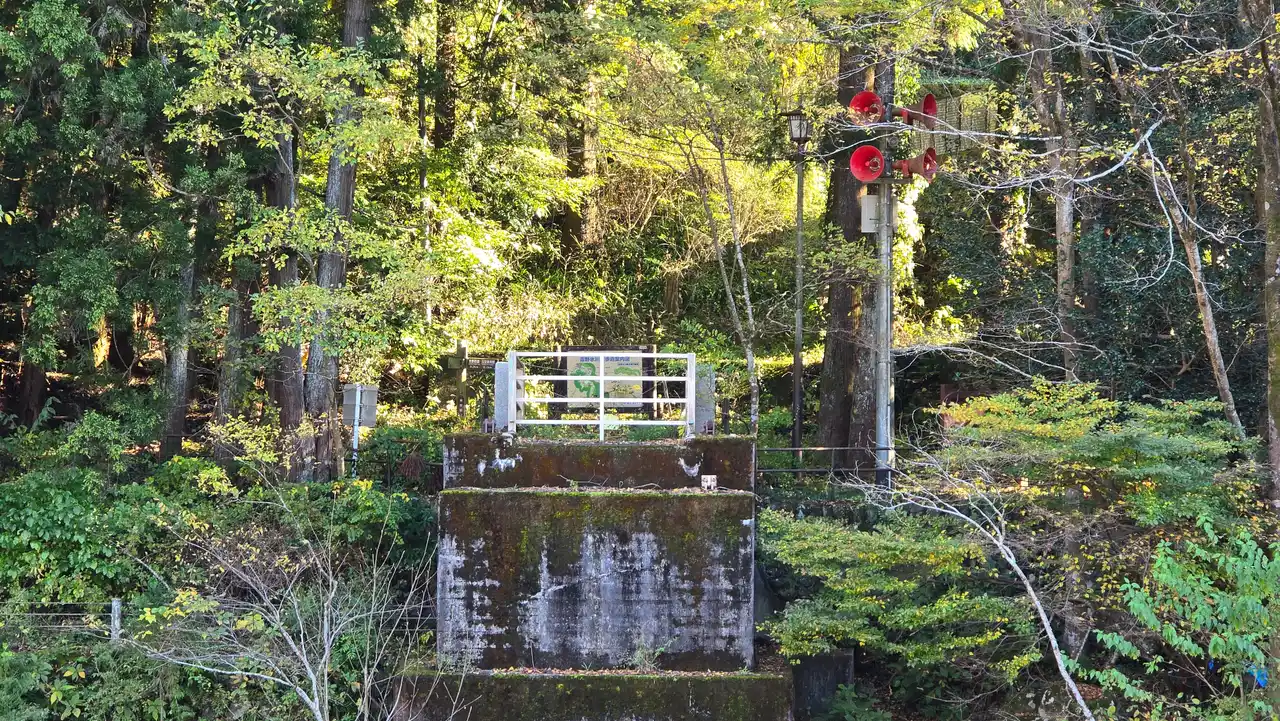
Across the bridge.
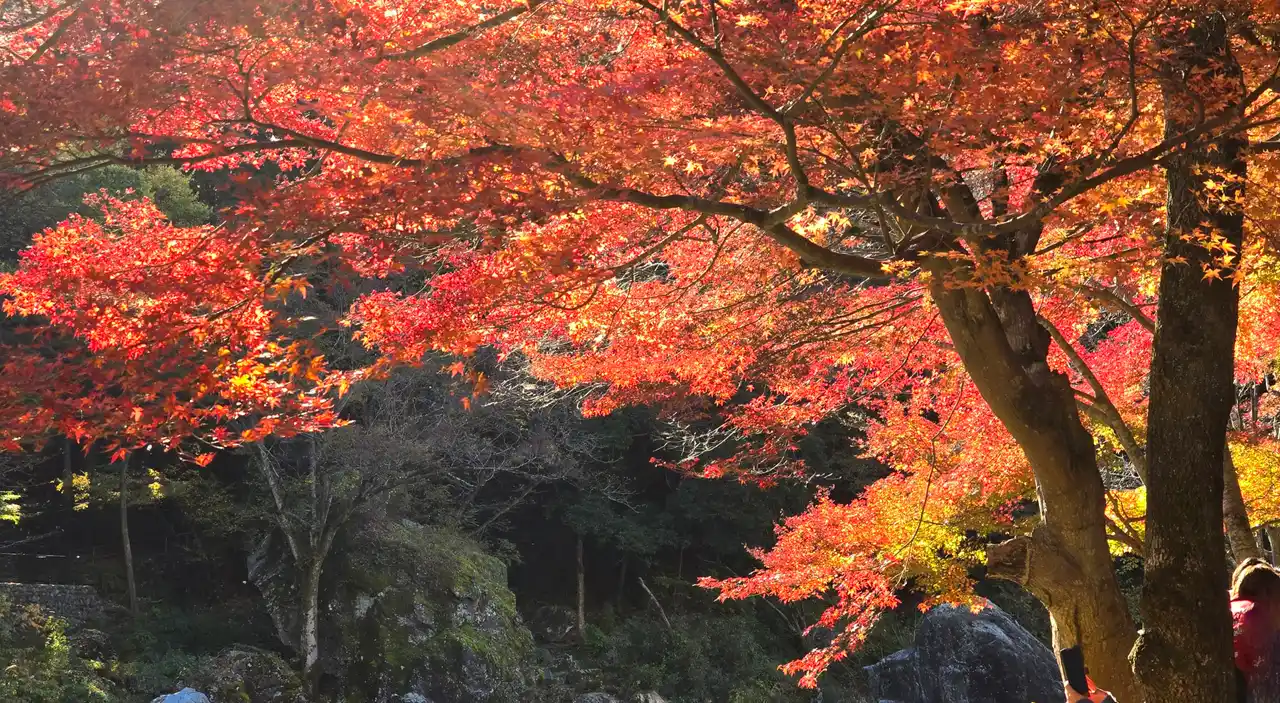
The maple leaves under the bridge are already very red.
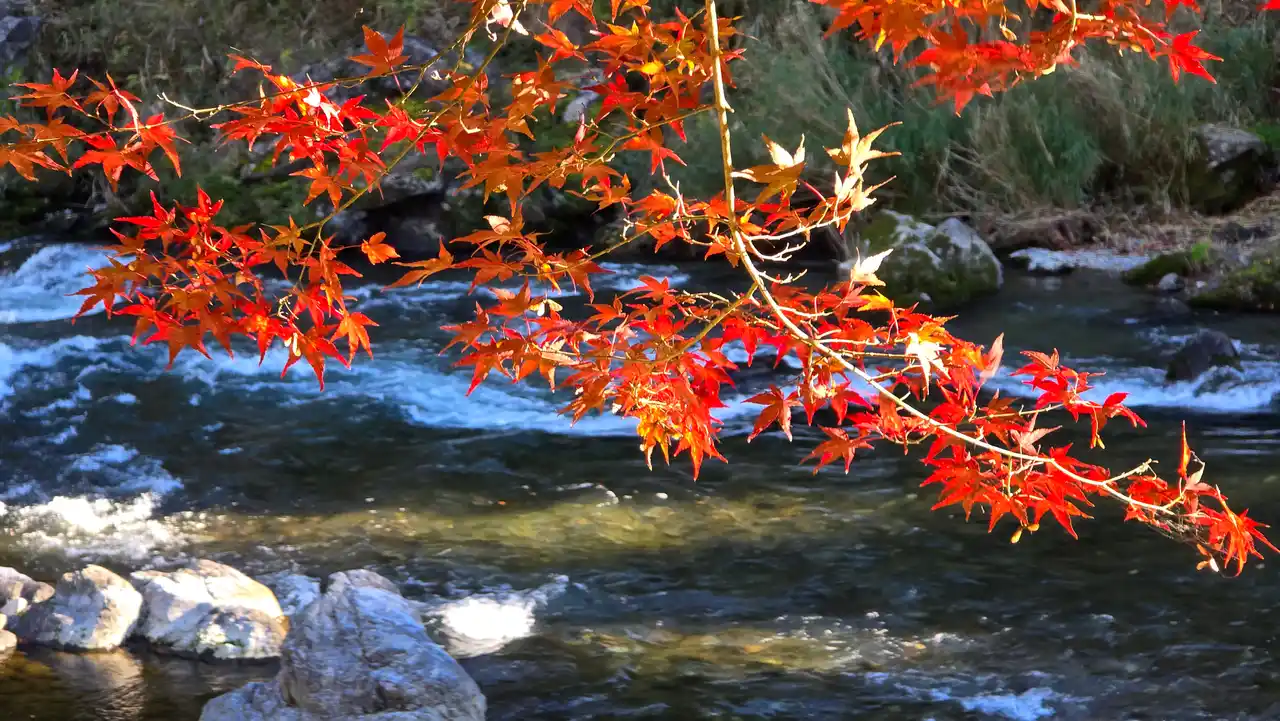
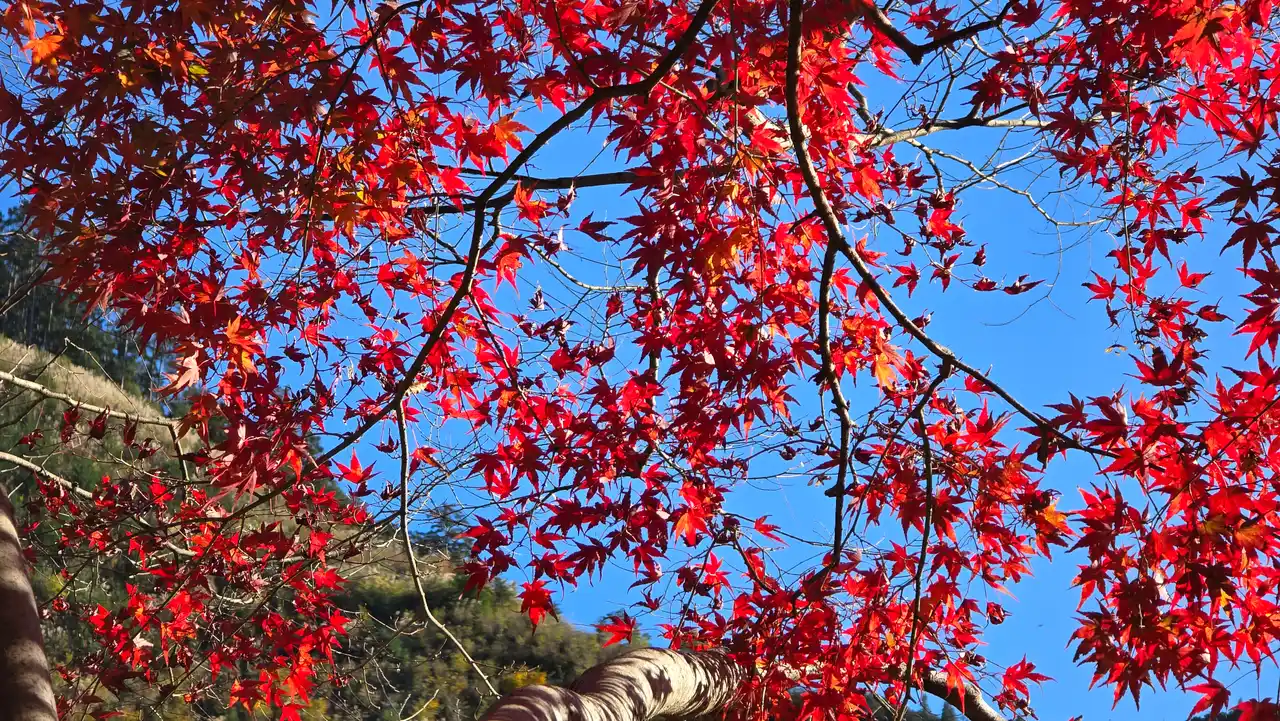
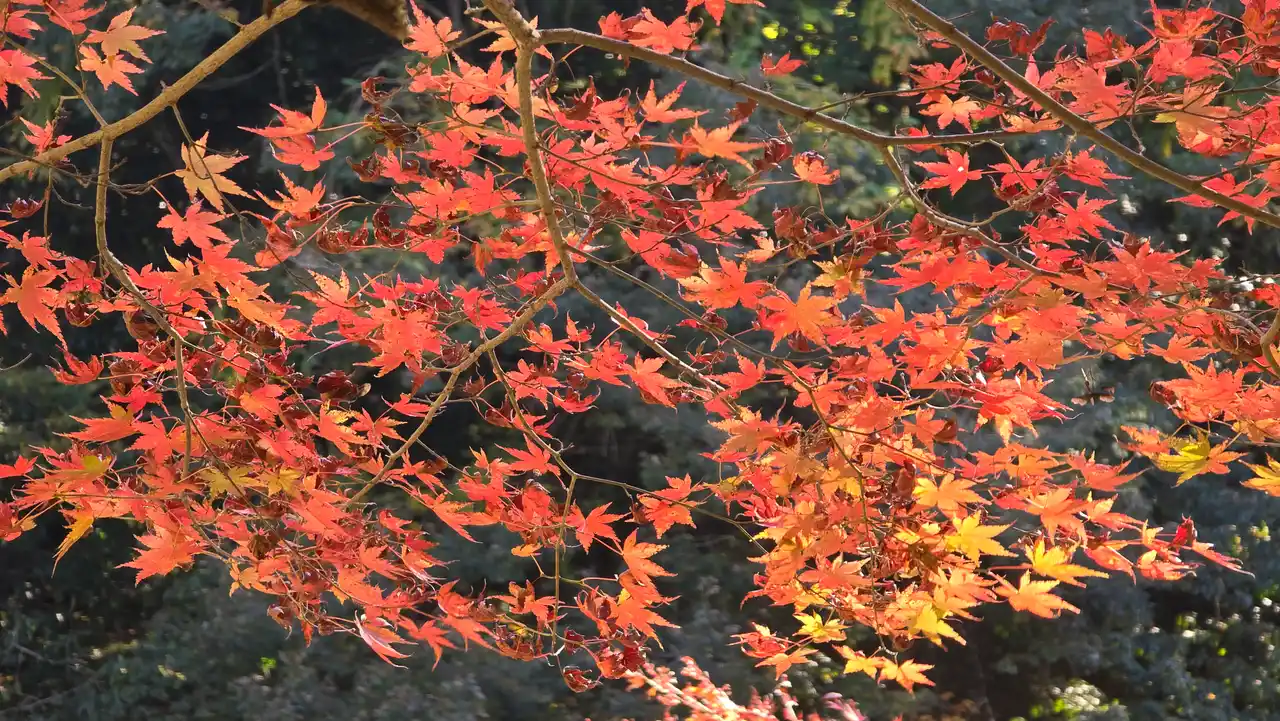
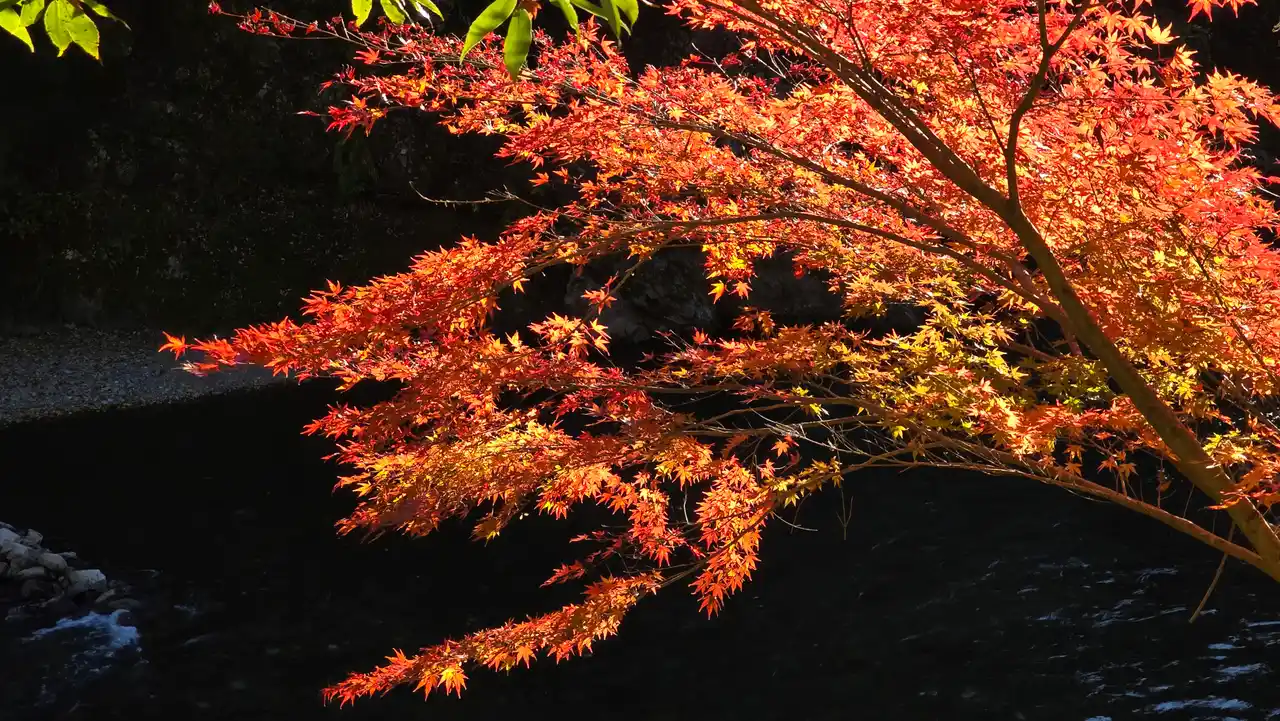

We were going to call home at the Ontake Kobashi Bridge, but at a fork in the road we met a tall man sketching and told us it was even prettier up ahead, so we decided to walk a bit more.
It is indeed redder and more beautiful, just as Tall Man said. Thanks for pointing it out, I almost missed the view.
close
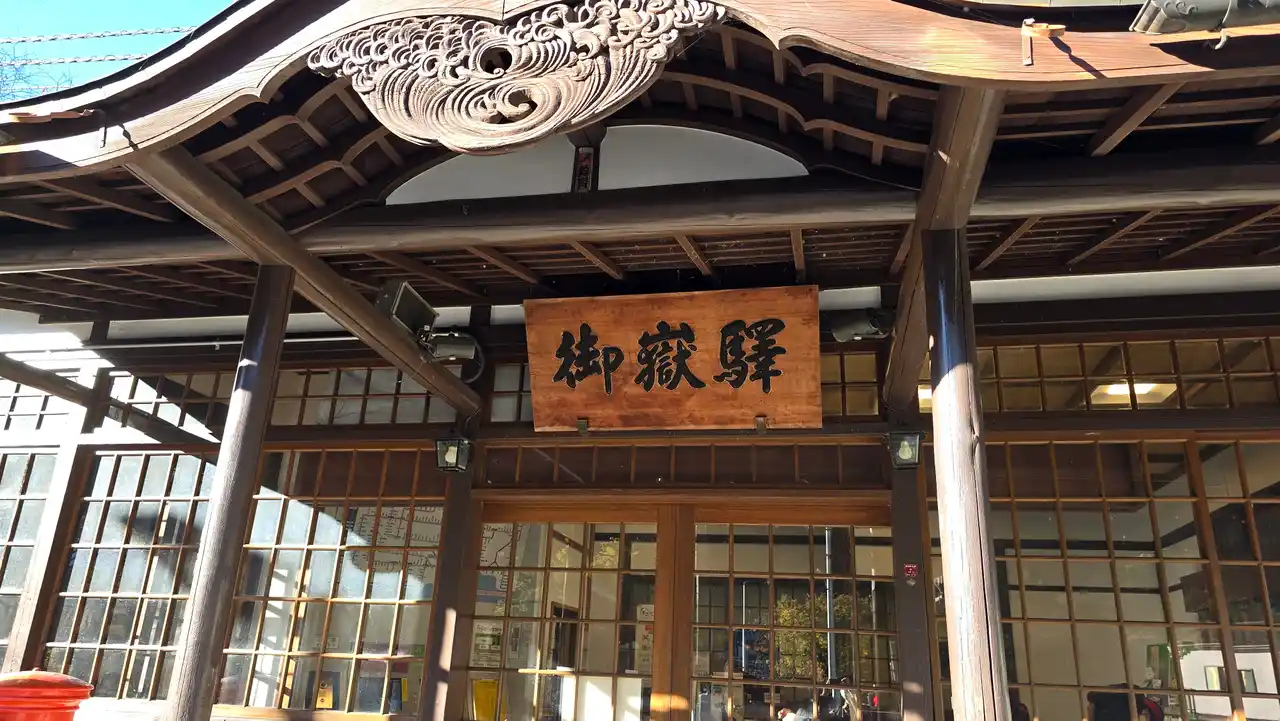
After walking for about 4 hours or so, we arrived at the end of the trip at Mikatake Station.
In fact, if there is still energy left, you can continue to take the tram here to Otomo, and then go to enjoy the beauty of Lake Tama, but obviously after walking for such a long time some tired chose to return home, Lake Tama will be left for another time!
So that’s it for the 2024 foliage tour, we’ll decide where to go for the 2025 maple season then!